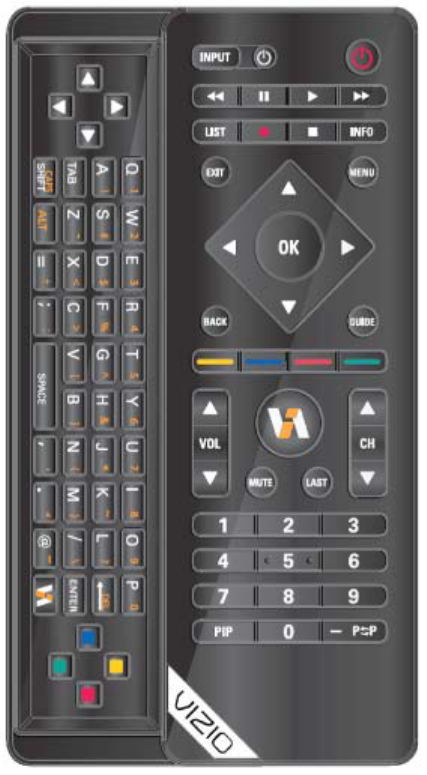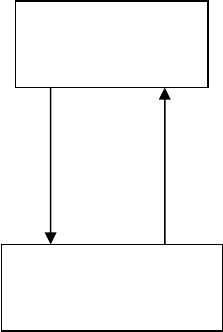Philips Electronics Singapore KWR60A r Keyboard Remote Control User Manual
Philips Electronics Singapore Pte Ltd Slider Keyboard Remote Control
User manual
KWR600001/01
User Manual
FCC Statement
FCC Part 15.19
This device complies with Part 15 of the FCC Rules. Operation is subject to the following
two conditions: (1) this device maynot cause harmful interference and (2) this device
must accept any interference received, including interference that may cause undesired
operation.
NOTE: This equipment has been tested and found to comply with the limits for a Class B
digital device, pursuant to Part 15 of the FCC Rules. These limits are designed to provide
reasonable protection against harmful interference in a residential installation. This
equipment generates, uses and can radiate radio frequency energy and, if not installed and
used in accordance with the instructions, may cause harmful interference to radio
communications. However, there is no guarantee that interference will not occur in a
particular installation. If this equipment does cause harmful interference to radio or
television reception, which can be determined by turning the equipment off and on, the
user is encouraged to try to correct the interference by one or more of the following
measures:
-- Reorient or relocate the receiving antenna.
-- Increase the separation between the equipment and receiver.
-- Connect the equipment into an outlet on a circuit different from that to which the
receiver is connected.
-- Consult the dealer or an experienced radio/TV technician for help.
Any changes or modifications not expressly approved by the party responsible for
compliance could void the user’s authority to operate the equipment.
No special accessory is required to enable the equipment to comply with the emission
limits.
Table of contents
1.General product description 4
1.1Product functions 4
2.Functional requirements 5
2.1Description of processes 5
2.2Description of system 5
2.3Real time requirements 8
3.GPIO communication 9
3.1Software version and IR DB version checking 9

1. General product description
1.1 Product functions
This KWR product is a Bluetooth keyboard + Bluetooth & IR Remote.
From the whole system point of view, the Bluetooth TV will be the host, the remote is a
dummy slave.
In normal working mode, the IR host always report key information to the BT host and wait
instruction from the BT host. For example, a play button on remote is pressed, the remote
report this key event to BT host, BT host send this info to TV (report key ID), TV will send 4
bytes payload information via BT host to the IR host, these 4 bytes contain the device mode,
IR code set ID (if under IR device mode), and key ID, after IR host get this info, it will call IR
engine to transmit this IR code.
There is no mode indicate on the remote, all remote mode info are displayed on the TV.
IR DB auto / manual search will be done by remote/TV mutual active.
Below is the product diagram.

2. Functional requirements
2.1 Description of processes
Any key system idle for
Is pressed more than nn seconds
This remote will contain below functions:
Inputs:
• key scan info
• data from Bluetooth interface
Outputs:
• Data to BT host
• IR transmit
When the keyboard is slide out, user touch either keyboard or remote will trigger the KWR
send key event to the TV.
2.2 Description of system
The software features of this KWR can be summarised as follows:
• Normal operation
• TV off mode
• Device mode change
• Preprogram mode
• Auto search
• Volume mapping
• Stuck key Timeout
Stop mode
Active mode
• BT HID keyboard
• Simultaneous Keypress
• Reset feature
• Special mode
2.2.1 Normal operation mode
This is the normal operation when TV is turns on; micro-controller is in active mode,
keyboard/remote function as BT HID device.
For remote, any valid key press event will report to BTH then BTH toTV, TV will decide the
button is for Bluetooth TV function or normal IR device control and send ACK / command back
to remote via BTH.
For keyboard, BTH will report key stroke info to TV via Bluetooth stack.
2.2.2 TV off mode
This is when TV is totally power off, if the IR device is set and selected before TV turns off,
remote will function as an IR remote control, the device mode will be the last device mode
before TV switch off.
2.2.3 Special mode
This special mode is for control Vizio TV with IR receiver only, when user setting to this mode,
the remote will send IR code for Vizio TV instead of control Vizio Bluetooth TV.
There are 7 IR code set for Vizio IR receiver TV, the digital key 1~7 map to the IR code set
1~7 in below description.
*Note: the number of code set pending for confirmation from Zilog IR DB team.
To active this mode, user should press below button in sequence
1st press and hold <OK> key, then <Vizio Widget> key, then <digital x (x: 1~7)>, then release
all of them, this will change remote to IR remote mode and assign the Vizio IR TV code set in
IR DB for the remote.
From IR TV remote mode back to normal Bluetooth TV remote mode, press below button in
sequence
1st press and hold <OK> key, then <Vizio Widget> key, then <Back> key, then release all of
them.
When remote enter Vizio IR TV remote mode, there will be no Bluetooth function, BT host will
go to standby mode.

2.2.4 Device mode change
For the remote function, there are Bluetooth TV mode ( as mentioned in 2.2.1) and IR device
mode, under IR device, there are multiple devices, they are SAT/CABLE, TV (IR TV), VCR,
DVD / Blue ray / HD, PVR, Audio (Tuner/Receiver) and Amplifier.
When user active device change function on the TV, the device name or icon will display on
TV, user can use navigate key to move between devices, press <ok> key on remote will
inform TV to make device selection.
2.2.5 ID setup
There is a table contain devices, brand names and code set IDs stored in TV, this function is
to setup IR database code set ID for an IR device.
For example user have a Philips DVD player, user select DVD device, and select brand
Philips, under Philips there may have multiple code sets, each code set represent a physical
remote control codes. After make the selection, the remote will understand what control code
to transmit.
TV application can assign default code set for each device, or leave it blank,
There will be 11 devices.
SAT CABLE TV ( IR TV) VCR DVD Blue
ray
HD PVR Tunner Receiver Ampilfier
Below example is a very short piece of brand name list and code sets ID list
Panasonic 115 130 160 169 170 172 175 176
177 181 196 201 215 216 217 218
219 220 228 229 307
Penney 065
Philco 080
Philips 048 053 161 180 184 202
Philips
Magnavox 162
Pioneer 049 051 085 088 096 099 129 132
140 168 193
2.2.6 Volume mapping function
Volume mapping means that the Audio control keys (“Volume Up”, “Volume Down” and
“Mute”) under the desired device mode will have its IR codes transmitted for the device being
programmed under the Secondary device if there is any.
Otherwise, it will send its command via BT module under Bluetooth TV mode.
Default setting for volume control function: Vol + / Vol - / Mute will map to Bluetooth TV
volume control. This mapping info will store in TV. TV will maintain this volume control
mapping table.

2.2.7 Stuck Key time out function
Stuck Key means that a key has been pressed for a very long time in normal operating mode.
To preserve battery power, the remote will shut down after 25-30 seconds after the last key
transition to consume minimal power. After all keys are released, the remote resumes normal
operation.
The following diagram shows the time limit when the stuck key power down mode is entered.
IR Transmit
Keypress
Time
± 30 s *
Key Pressed
Code starts transmitting Key still pressed after ±30 seconds
Remote goes in power-down mode,
code transmission stops
Code transmission
activated by key
Remote resumes
normal operation
after ALL keys
released
STUCK KEY TIMEOUT
* Stuck Key Timeout is typical 30 seconds, actual timing depends on the protocol transmitted
Power down -mode
Note: For some protocols in database, the stuck key timeout ranges from 15s to 70s.
2.2.8 Simultaneous Keypress
If more than one key press is detected, remote controller will stop sending IR code.
2.2.9 Standby mode
The standby mode of the remote shall be entered approximately 5 seconds after the last key
is released.
2.3 Real time requirements
There will be data transmit latency on both Bluetooth interface and GPIO interface, compare
the timing, the BT latency is much heavy, around 100ms (maximum).
3. GPIO communication
3.1 Software version and IR DB version checking .
Expected under TV menu, there is one item for this function, to check remote software version
and IR database version. Data exchange method below:
After user make selection on TV, TV will send a ACK packet to IR host via BTH, this will
trigger IR host return s/w version number and IR DB version number. The version number will
be 3 digit: x.y.z (0 <= x, y, z <=0xF), for example: 3.B.2
Payload from TV to IR host will be:
– DeviceID = 0x30 (this data means get s/w version and IR DB version)
– CodesetID xxxx (don’t care)
– KeyID xx (don’t care)
Payload data from IR host to TV will be total 6 bytes, these 6 bytes will follow the single byte
transmit protocol defined in Error! Reference source not found., send from IR host to BT
host one byte by one byte.
1. 0x8x, s/w version
2. 0x8y
3. 0x8z
4. 0x9x’, IR DB version
5. 0x9y’
6. 0x9z’